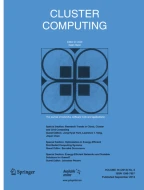Abstract
The rapid development of Tibetan information technology provides rich resources for Tibetan information processing technology. The construction of Tibetan corpus is the field of Tibetan information processing of basic work. In this paper, we design the system of Tibetan network data collection and web pages preprocessing. It can timely and efficiently access to web resources, and provide a basis for further analysis of Tibetan data. It can establish the Tibetan related corpus, enrich the Tibetan digital resources. It can also alleviate the status of Tibetan corpus data sparse and lack of resources and bring the convenient condition for Tibetan information processing. The hot words reflect the hot spot of Tibetan people’s attention in a certain period of time. Firstly, the paper proposes the method for reducing the space dimension of Tibetan news text. It can effectively reduce the complexity of subsequent processing. Secondly, term weighting method is proposed based on improved TFIDF for Tibetan text information extraction. It utilizes the idea that the words of different locations are given different weights to extract the hot words. On sensitive words discovery and classification of public opinion, sensitive thesaurus are collected artificially. Through the sensitive thesaurus comparison, the sensitive words are extracted. Classification of public opinion words is based on the proposed classification formula and the public opinion thesaurus. It will classify one Tibetan text to one public opinion class. In this paper, the software is developed to automatically collect Tibetan web pages from the network, preprocess the web pages, extract the text features and hot words, discover the sensitive words and classify the Tibetan text to one public opinion class. The experiment shows that the Tibetan hot words extraction is effective and Tibetan classification results of public opinion are significant.
Similar content being viewed by others
References
Gao, D.G., Guan, B.: Retrospect on the development of Tibetan information processing technology. J. Tibet Univ. 24(3), 18–27 (2009)
Li, Y.Q., Sun, L.H.: Hot-word detection for internet public sentiment. J. Chin. Inf. Process. 25(1), 49–53 (2011)
Gao, D.G., Tashigyal, Zhao, D.C.: Data analyses of large basic Tibetan corpus. J. Northwest Univ. Natl. 34(92), 46–51 (2013)
Li, P.F., Zhu, Q.M., Qian, P.D.: Construction approach of large-scale corpus based on web. Comp. Eng. 34(7), 41–46 (2008)
Liu, H.D., Nuo, M.H., Ma, L.L.: Mining Tibetan web text resources and its application. J. Chin. Inf. Process. 29(1), 170–177 (2015)
Yang, D.Z., Zhao, G., Wang, T.: Application of WebCrawler in information search and data mining. Comput. Eng. Des. 30(24), 5658–5662 (2009)
Yang, L., Geng, X., Liao, H.: A web sentiment analysis method on fuzzy clustering for mobile social media users. Eurasip J. Wirel. Commun. Netw. 2016(1), 1–13 (2016)
Wu, Q., Yang, X., Zhao, Z.X.: Web information extraction based on visual characteristics. In: Symposium of the Sixth China Conference on Information Retrieval (2010)
Zhang, R.X., Song, M.Q., Gong, Y.L.: Parsing DOM tree reversely and extracting web main page information. Comput. Sci. 38(4), 213–215 (2011)
Hu, J.D.: Research on Web News Extraction and Duplicates Elimination. Zhejiang University, Hangzhou (2011)
Ma, C.Q., Mao, X.G.: Research on near-duplicate detection algorithm shingling and simhash. Comput. Digit. Eng. 39(1), 15–17 (2009)
Kang, C., Jiang, D., Long, C.: Tibetan word segmentation based on word-position tagging. In: 2013 International Conference on Asian Language Processing (IALP), pp. 239–242. Urumqi (2013)
Jin, Z.: A method of intelligence key words extraction based on improved TF-IDF. J. Intell. 4, 028 (2014)
Salton, G., Wong, A., Yang, C.S.: A vector space model for automatic indexing. Commun. ACM 18(11), 613–620 (1975)
Becker, J., Kuropka, D.: Topic-based vector space model. In: Proceedings of the 6th international conference on business information systems, pp. 7–12 (2003)
Aizawa, A.: An information-theoretic perspective of tf-idf measures. Inf. Process. Manage. 39(1), 45–65 (2003)
Wu, H.C., Luk, R.W.P., Wong, K.F., et al.: Interpreting tf-idf term weights as making relevance decisions. ACM Trans. Inf. Syst. 26(3), 13 (2008)
Shi, C.Y., Xu, C.J., Yang, X.J.: Study of TFIDF algorithm. J. Comput. Appl. 26, 167–170 (2009)
Cao, H., Jia, H.: Tibetan text classification based on the feature of position weight. In: 2013 International Conference on Asian Language Processing (IALP), pp. 220–223. Urumqi (2013)
Jiang, T., Yu, H.Z., Zhang, B.: Tibetan text classification using distributed representations of words. In: 2015 International Conference on Asian Language Processing (IALP), pp. 123–126. Suzhou (2015)
Kim, S.B., Han, K.S., Rim, H.C., HyonMyaeng, S.: Some effective techniques for Naive Bayes text classification. IEEE Trans. Knowl. Data Eng. 18(11), 1457–1466 (2006)
Liu, W., Song, Z.: Design and implementation of an internet public opinion monitoring system. In: 2014 International Conference on security, pattern analysis, and cybernetics (SPAC), pp. 114–118. Wuhan (2014)
Guo, K., Shi, L., Ye, W., Li, X.: A survey of internet public opinion mining. In: 2014 International Conference on progress in informatics and computing (PIC), pp. 173–179 Shanghai (2014)
Li, X., Gao, L.: The design and implementation of an internet public opinion monitoring and analyzing system. In: 2013 International Conference on Service Sciences (ICSS), pp. 176–180. Shenzhen (2013)
Mo, J.W., Zheng, Y., Shou, Z.Y., Zhang, S.L.: Improved Chinese word segmentation method based on dictionary. Comput. Eng. Des. 34(5), 1802–1807 (2013)
Chen, Y.Z., Li, B.L., Yu, S.W., Lan, C.J.: An automatic Tibetan segmentation scheme based on case-auxiliary words and continuous features. Appl. Linguist. 1, 75–82 (2003)
Zhu, J., Li, T.R.: Research on Tibetan stop words selection and automatic processing method. J. Chin. Inf. Process. 29(2), 125–132 (2015)
Acknowledgements
This work was supported by the Beijing Social Science Foundation (No. 14WYB040), First class university, First class discipline construction funds of Minzu University of China (No.2017MDYL12), the National Natural Science Foundation of China (No. 61309012), the National Key Technology Research and Development Program of the Ministry of Science and Technology of China (No. 2014BAK10B03).
Author information
Authors and Affiliations
Corresponding author
Rights and permissions
About this article
Cite this article
Xu, G., Wang, C., Yao, H. et al. Research on Tibetan hot words, sensitive words tracking and public opinion classification. Cluster Comput 22 (Suppl 4), 9977–9990 (2019). https://doi.org/10.1007/s10586-017-1026-x
Received:
Revised:
Accepted:
Published:
Issue Date:
DOI: https://doi.org/10.1007/s10586-017-1026-x
